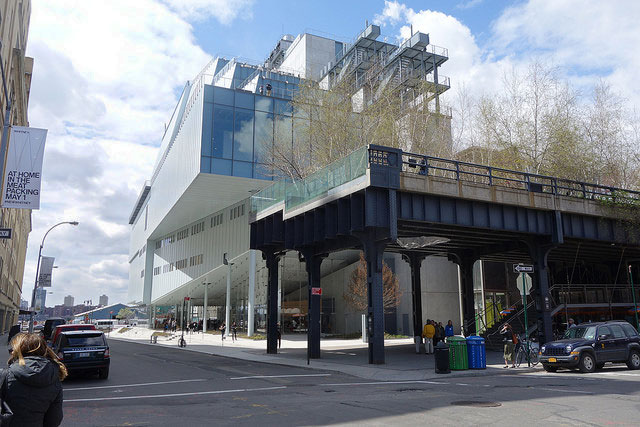
The New Whitney. All photos: Paddy Johnson
First thought entering the new Whitney: This is what critics wished for the 2004 MoMA expansion. What we got then was a soulless corporate building by Yoshio Taniguchi that happened to have an exhibition space. Compare that to the Whitney’s new building by architect Renzo Piano (open May 1), which is a warm and inviting space that responds to the collection itself. Excuse the hyperbole, but it feels like a triumph by comparison.
And what a sight the new building is to behold. I’m talking eight floors (85,000 square feet of exhibition space), wood flooring as far as the eye can see, and some of the best vistas you’ll see in New York. Incredible. Plus, there’s nothing about this space that feels off-putting or unapproachable. The museum’s administration offices are in plane sight on the fourth floor—separated only by a glass door, and the curator’s offices on the 7th floor are only steps away from the exhibition space. By contrast, MoMA quarantined their administrative staff in a separate building.
Tomorrow, I’ll be taking a closer look at America Is Hard to See, a survey show of American art in their collection from 1900 to today. Today, there’s the slideshow of exhibition highlights.
THE ENTRANCE

The new Whitney exterior
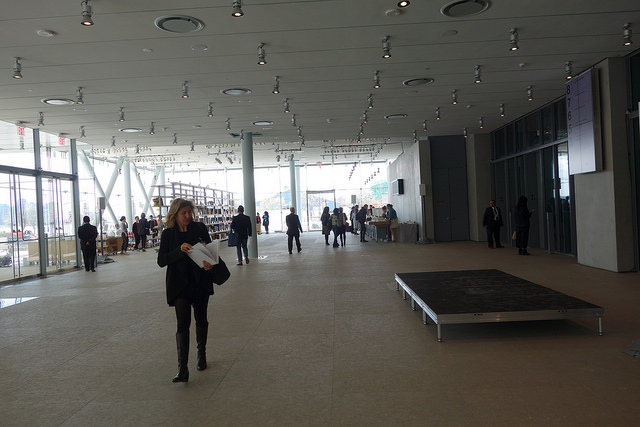
New Whitney lobby. This section of the museum is free and open to the public at all times, but also little dreary.
8TH FLOOR
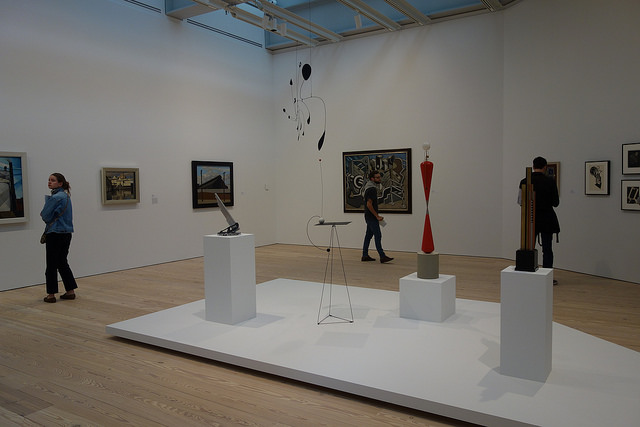
American industry as influence. Installation view of the “Machine Ornament” section.
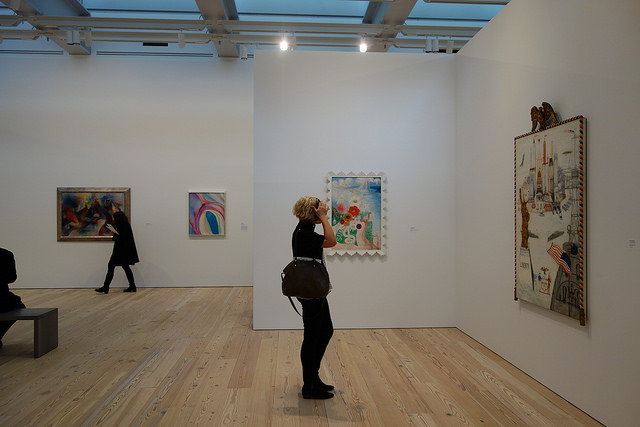
8th floor, Florine Stettheimer in the foreground, Georgia O’Keeffe in the background.
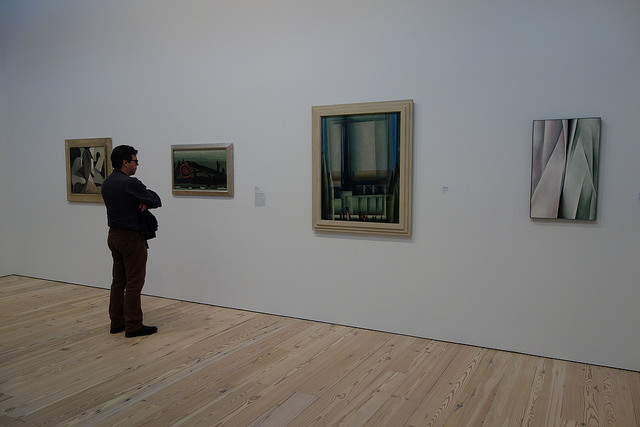
Cubism and Futurism through the lens of American painters. Another stunning Georgia O’Keeffe on far right. All this falls in the “Forms Abstracted” section of the floor.

Stuart Davis, “House and Street,” 1931. Amazing.
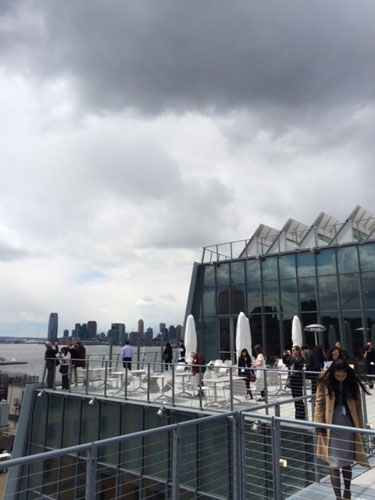
One of the many terraces at the Whitney. This one, from the 8th floor.
7TH FLOOR
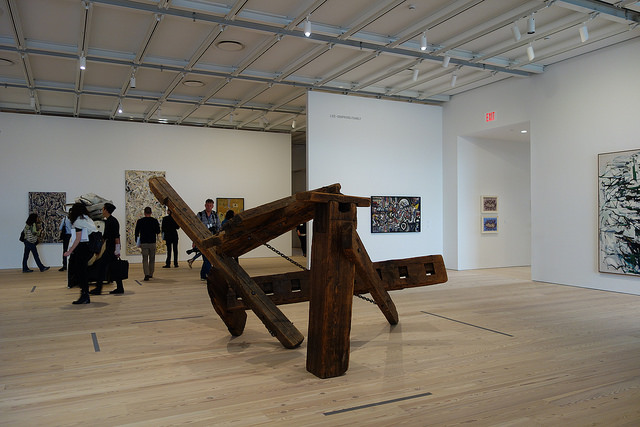
Installation view, 7th floor

Joan Mitchell, “Hemlock,” 1956 and Willem de Kooning, “Door to the River,” 1960. It’s hard to tell here, but I included this pairing to show just how much more skilled Mitchell was as a painter than de Kooning (at least here). The brushwork is much more complicated and sophisticated.

Jackson Pollock, “No. 27,” 1950. Included because this is a terrible painting. A close inspection of these splatters shows there’s nothing more to this painting, than, well, splatters. Also, every online image, including the Whitney’s, shows this painting with a horizontal orientation. Does it not matter which way this painting is hung?
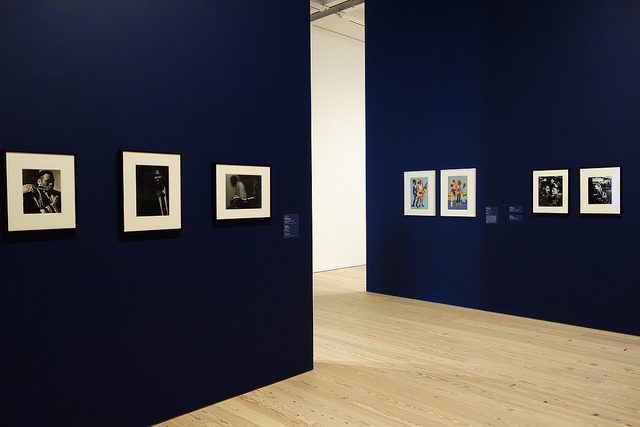
Edward Steichen photographs, left. William Johnson drawings, right. Apparently the ceilings are lower in this section—15 feet instead of 17, to create a more intimate feeling. Lots of African Americans in this room, a welcome relief from the overwhelming whiteness of museums.
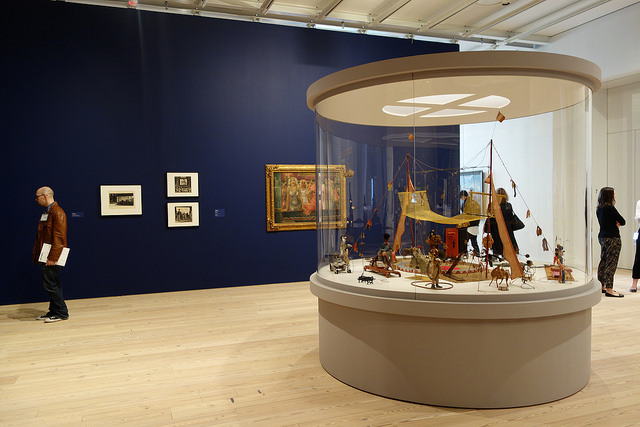
Installation view
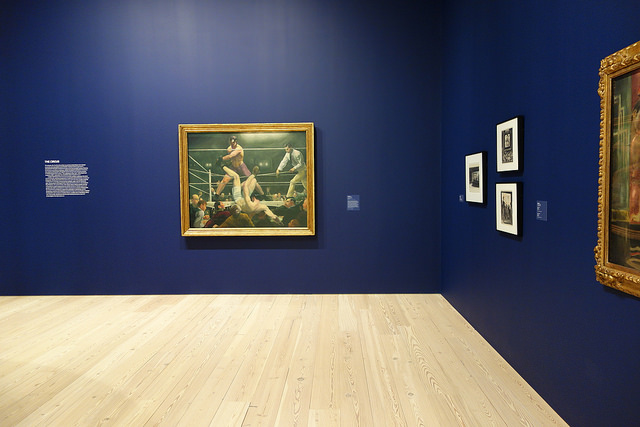
Installation view

“Breaking the Prairie”: a selection of landscapes and portraits made by Americans made prior to World War II.
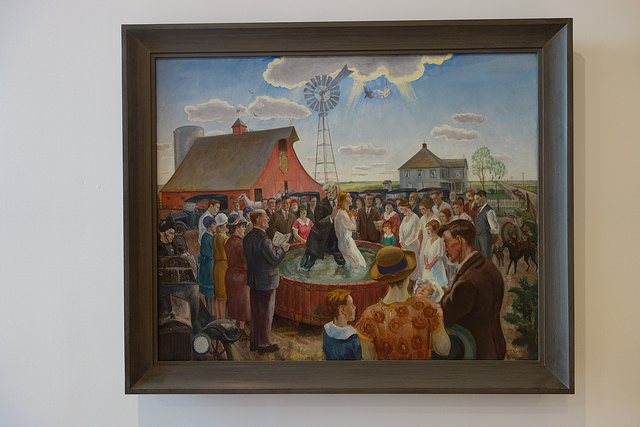
John Steuart Curry, “Baptism in Kansas,” 1928. Possibly my favorite painting in the whole collection because the priest looks a little creepy-violent despite the rays of light shining down on this young woman.
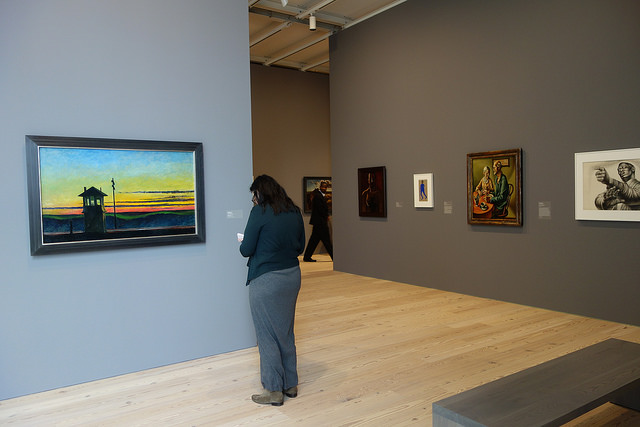
“Breaking the Prairie,” installation view
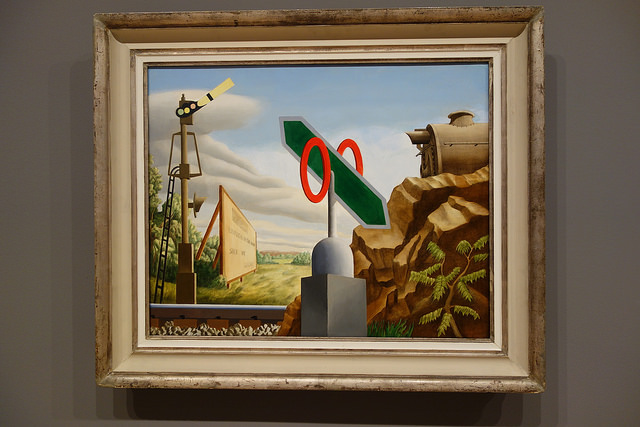
Henry Billings, “Lehigh Valley,” 1930
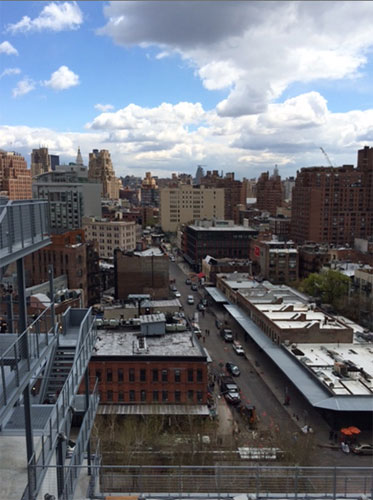
View from the Whitney terrace
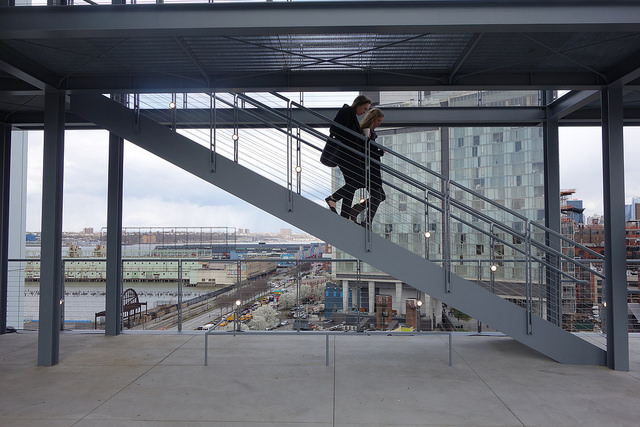
Another view from the Whitney terrace
SIXTH FLOOR
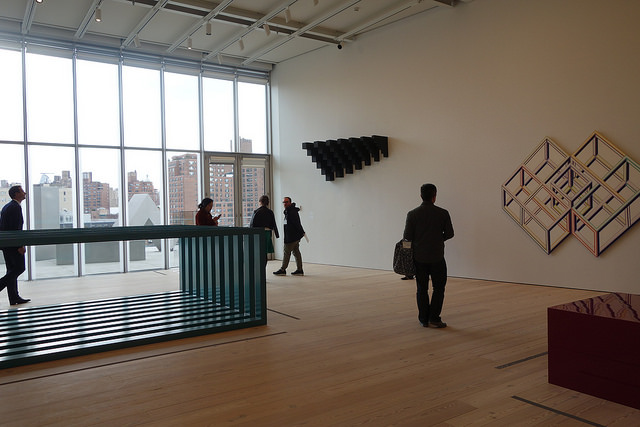
Not my favorite section in the museum: Minimalism! (Or as the museum has called this section, “Rational Irrationalism.”) There’s not quite enough of it to make a statement, and what’s on view is pretty meh. Installation view.

But there are highlights: Michelle Stuart, “28 Moray Hill,” 1974; Rafael Ferrer, “Neon Corner,” 1970; and Richard Serra, “Prop,” 1978.
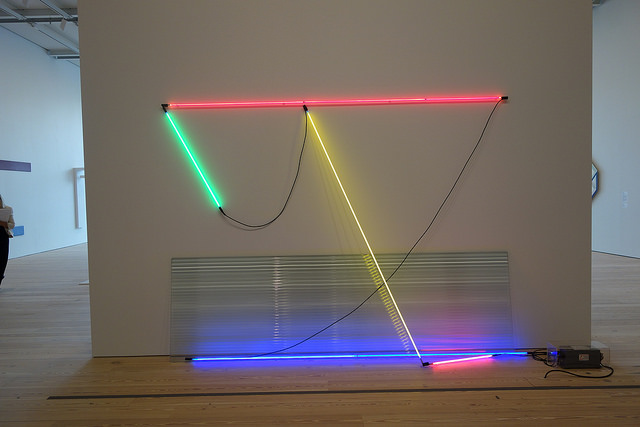
Also a highlight: Keith Sonnier, “Ba-O-Ba, Number 3,” 1969.

George Segal, “Walk, Don’t Walk,” 1976

Pop art! “Large Trademark” displays work from the 1960s that draws from advertisements, comics, product packaging, and newspaper photos.
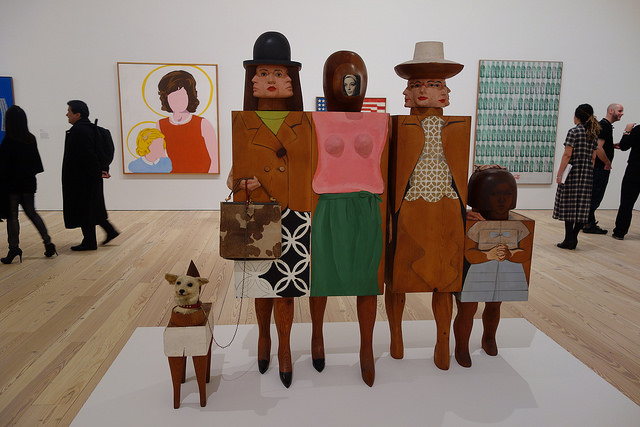
Marisol Escobar, “Women and Dog,” 1964

Boom! Love the bold canvases here. Again from the “Large Trademark” section.

A view of Jay Defeo’s “The Rose” framed by museum walls.
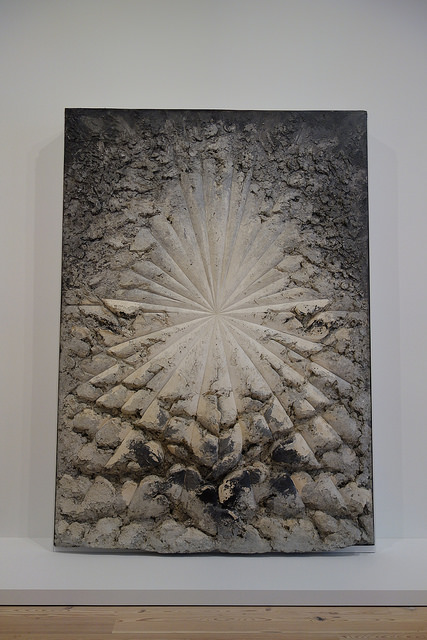
Jay DeFeo, “The Rose,” 1958-66. One of my favorite works in the whole collection. It took eight years to make this piece, and no-fucking shit. It’s so good. There whole thing is just piles upon piles of oil on wood on canvas, all to make this heavy, vaguely floral shape. Fittingly, the Whitney has constructed what amounts to an altar to display it. One of the great masterworks of the 20th century.
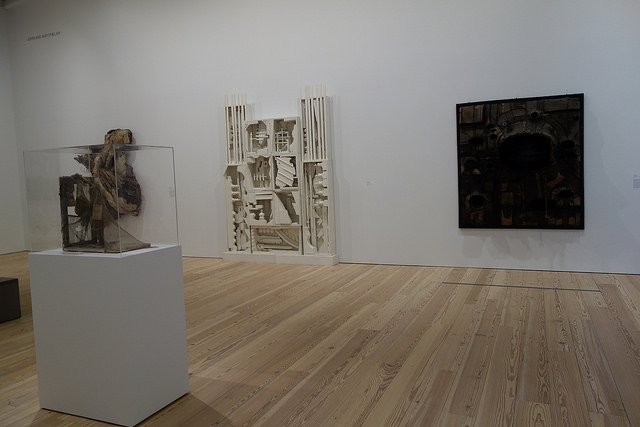
Impossible to get a shot with DeFeo, Louise Nevelson, and Lee Bontecou without a wide-angle lens, but what a privilege to see them together. This is the assemblage section called “Scotch Tape.”

Elevator bay by Richard Artschwager
5TH FLOOR
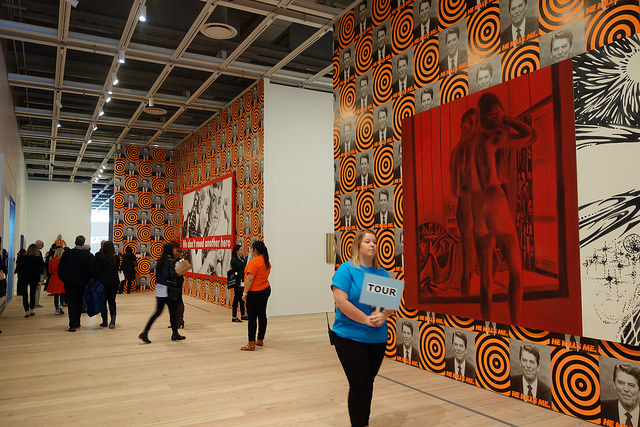
Installation view: Donald Moffat wallpaper, “He Kills Me,” 1987; Barbara Kruger, “Untitled, (We don’t Need Another Hero),” 1987.
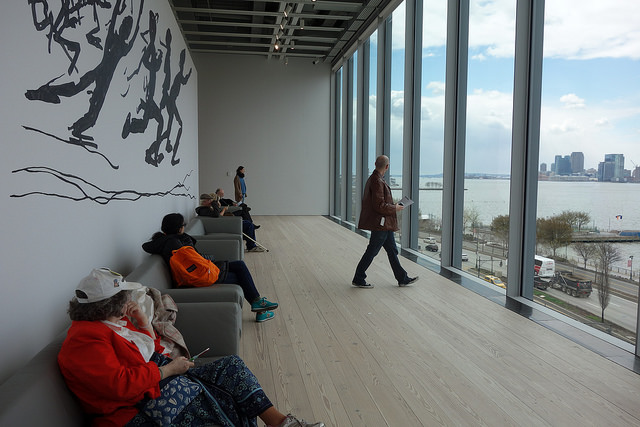
A view of the water
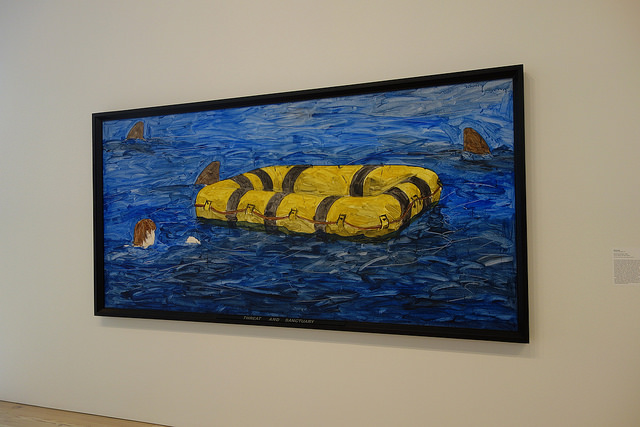
Neil Jenney, “Threat and Sanctuary,” 1969. Aptly placed on a wall just in front of the water.
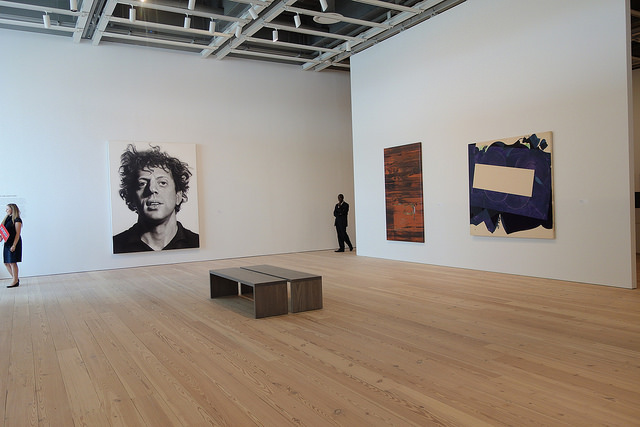
Installation view of “Learn Where Meat Comes From,” the museum’s collection of narrative or performative based works.
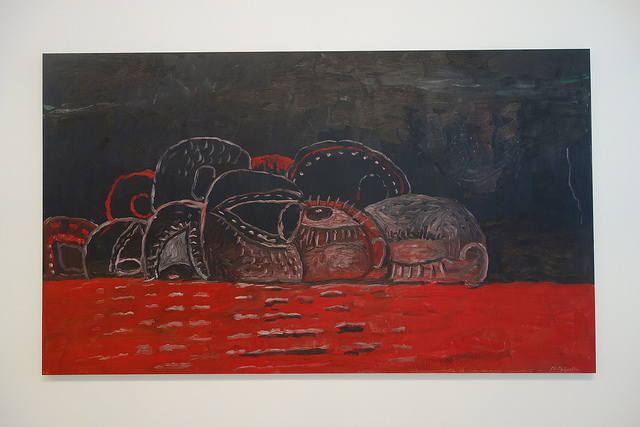
Phillip Guston, “Cabal,” 1977

Nam June Paik, “V-yramid,” 1982, and Peter Halley, “Blue Cell with Triple Conduit,” 1986
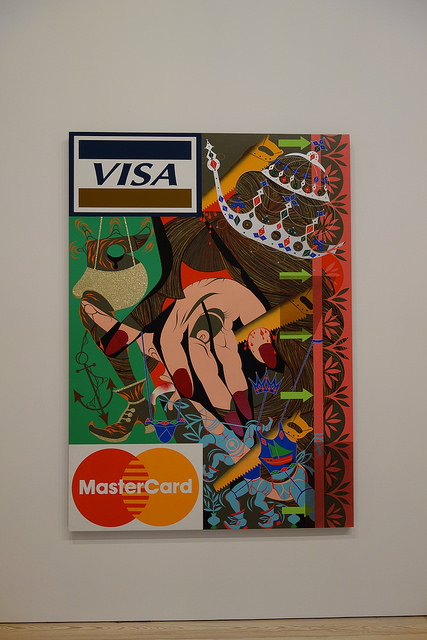
Lari Pittman, “Untitled 16”, 1993. I didn’t realize Pittman was such a skilled painter until seeing this work. So many different elements in this work to balance and he does it perfectly!
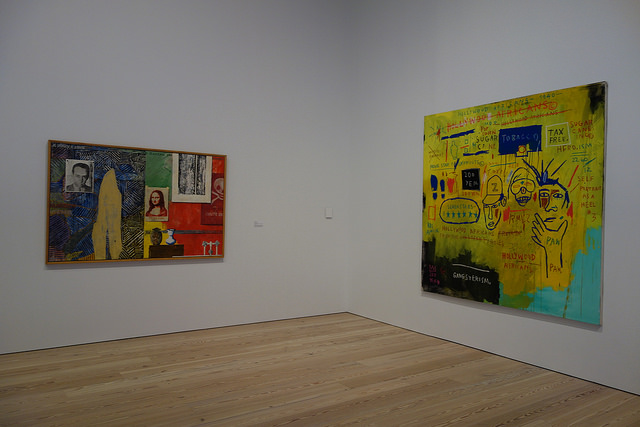
Jean-Michel Basquiat, “Hollywood Africans,” 1983 and Jasper Johns, “Racing Thoughts,” 1983

Charles Ray, “Boy,” 1992. Always creepy.
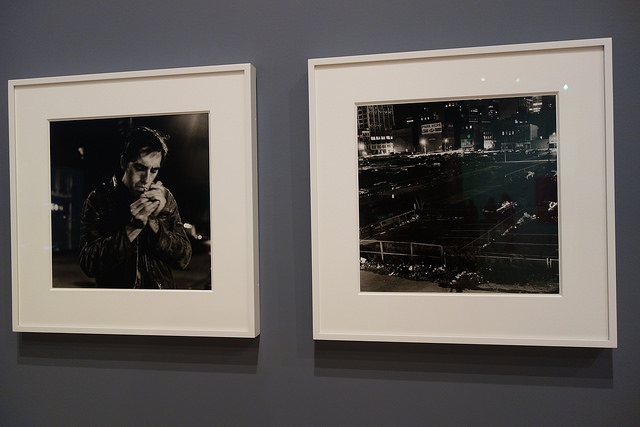
Peter Hujar, “David Lighting Up: (Left),” 1985; “West Side Parking Lots,” 1976
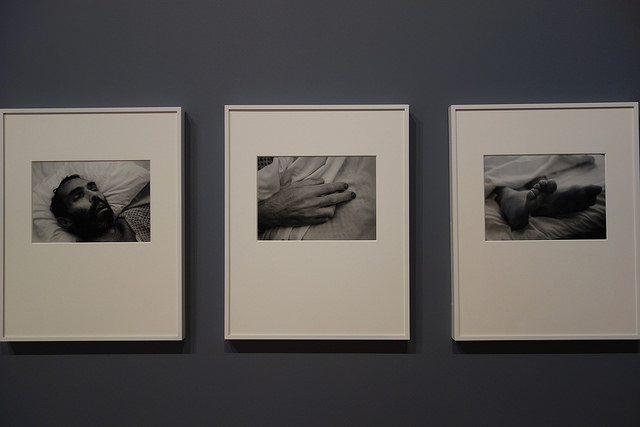
David Wojnarowicz, “Untitled,” 1989. An incredible series of photographs by Hujar (above) and Wojnarowicz (below). The two were lovers and friends, and both casualties of AIDS. The above photograph was taken minutes after Hujar died of AIDS. His hands and feet had become swollen and infected.
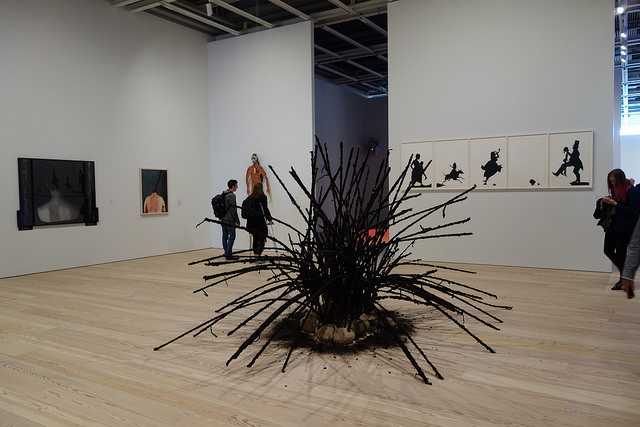
Installation view
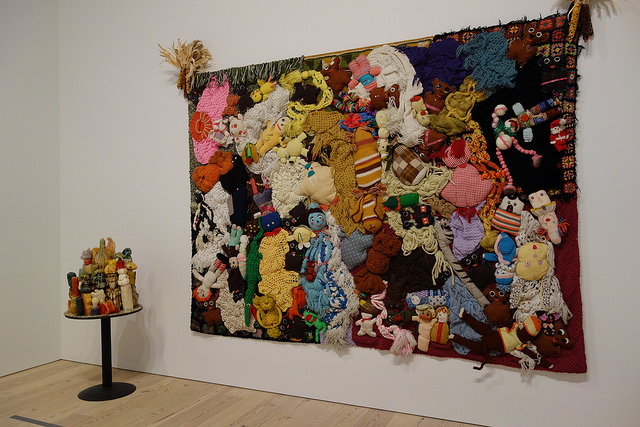
Mike Kelley, “More Hours Than Can Ever Be Repaid,” 1987
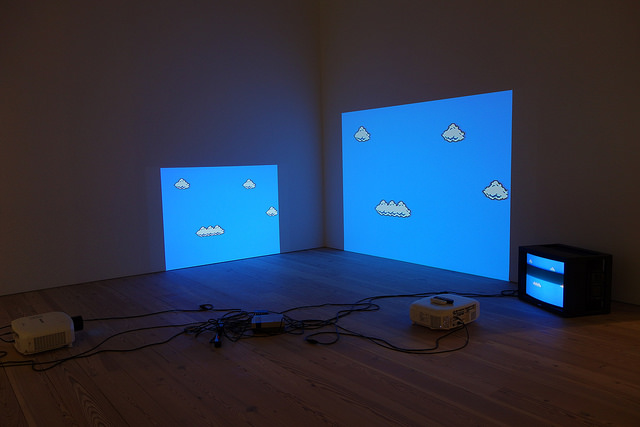
Cory Arcangel, “Super Mario Bros,” 2002
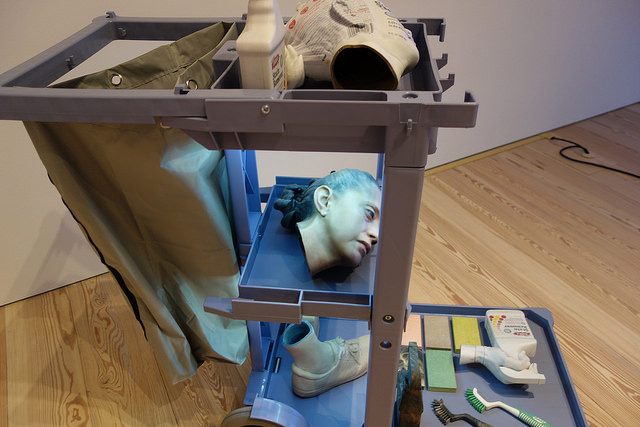
Josh Kline, “Cost of Living (Aleyda),” 2014. Pretty happy to see this work here after Kline produced his police surveillance Telletubbies installation/tour de force for the New Museum Triennial.

Installation view: Carroll Dunham, Rachel Harrison, and Mark Bradford
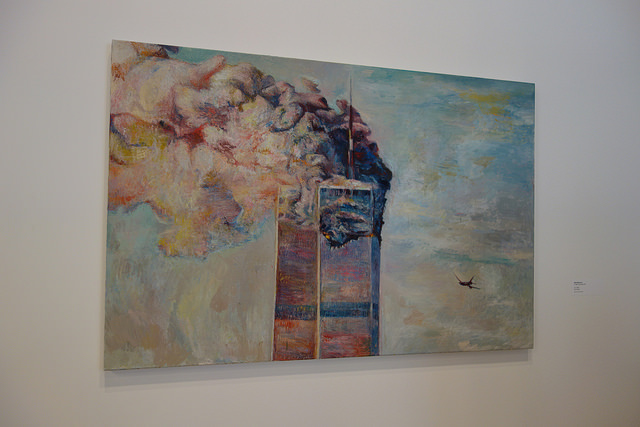
Keith Mayerson, “9-11,” 2007
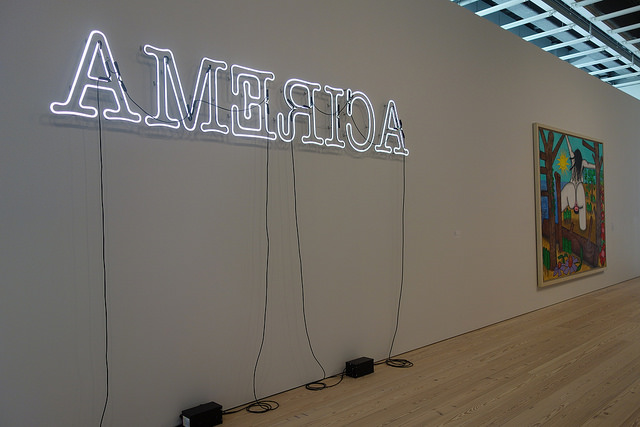
Installation view, Glenn Ligon, “Ruckenfigur,” 2009 and Carroll Dunham
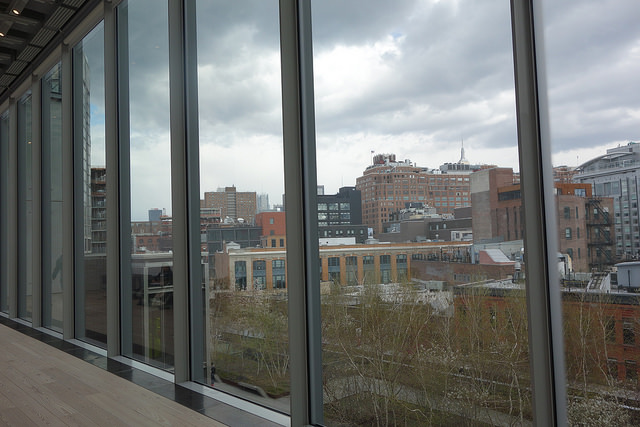
View of the city
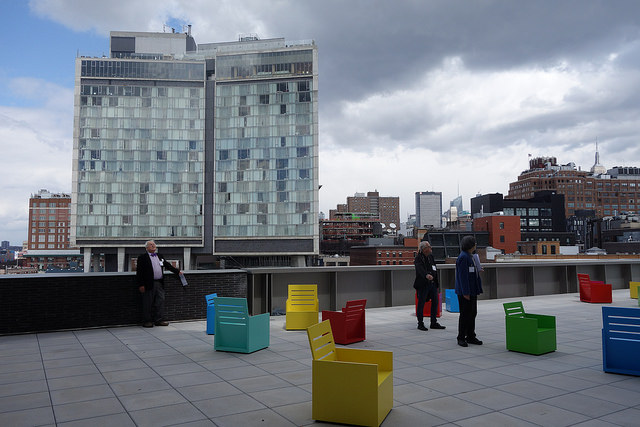
Mary Heilmann, “Sunset,” 2015. These things look like Ikea chairs, so I guess we’ll call that installation a bit of a disappointment.

Felix Gonzalez-Torres, ‘Untitled (America),” 1994


{ 3 comments }
art museums are for spiritually blind all you athiests shoud go to church
Thanks for sharing these casual snapshots—really enjoyed. (“plane” “plain” typo, fyi)
Looks amazing, can’t wait to see The Rose in person some day.
Comments on this entry are closed.